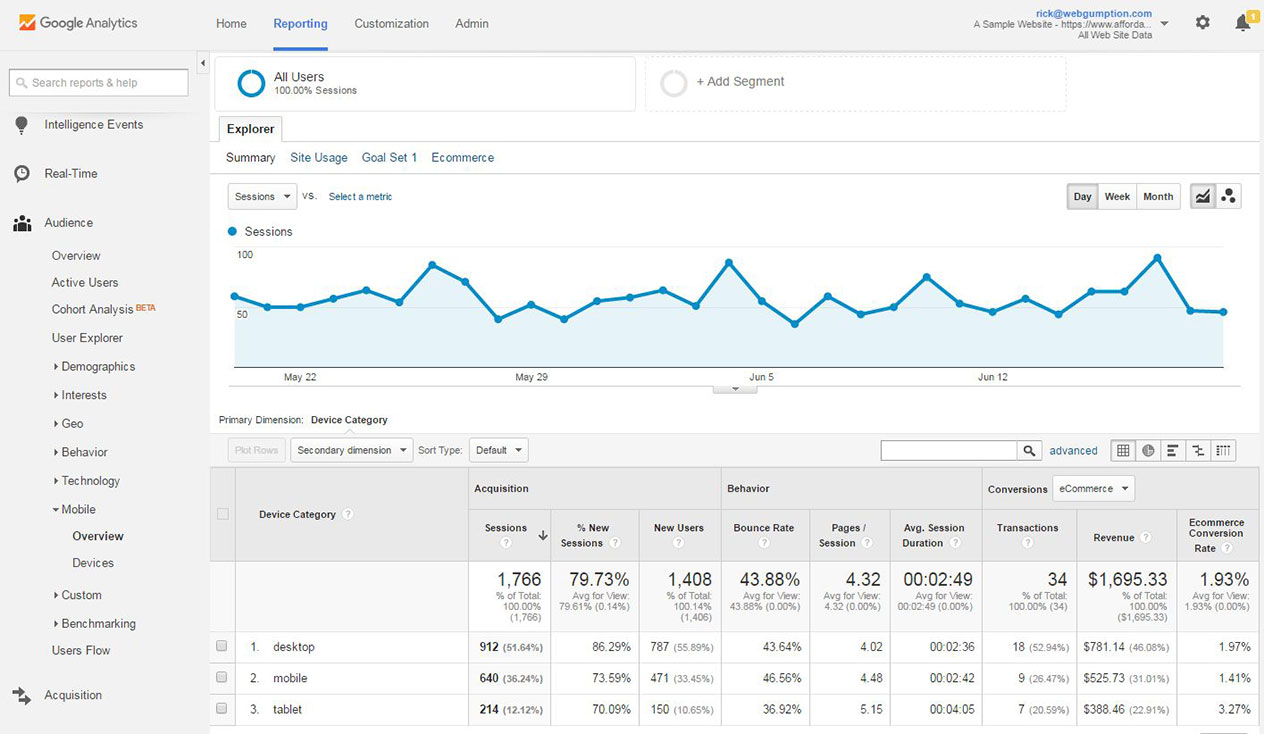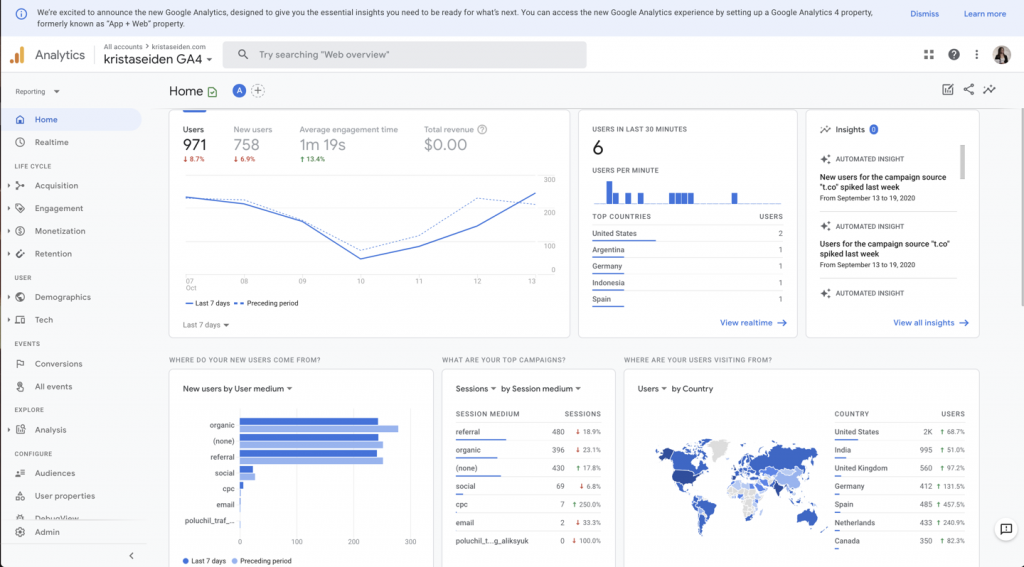Key Constraints: What Data Does Google Analytics Prohibit Websites from Collecting?
Key Constraints: What Data Does Google Analytics Prohibit Websites from Collecting?
Blog Article
Leveraging Google Analytics for In-Depth Insights Into User Actions and Engagement
In the electronic landscape where user actions and interaction hold the vital to on-line success, leveraging devices like Google Analytics has come to be critical for businesses seeking to comprehend their target market's interactions with their systems. This advanced analytics system supplies a wide range of data that can unveil detailed details concerning just how individuals browse sites, engage with content, and inevitably convert - what data does google analytics prohibit collecting. By using Google Analytics, companies can discover important insights that go past surface-level metrics, giving a thorough understanding of customer behaviors and preferences
Recognizing Customer Behavior Via Google Analytics
Utilizing Google Analytics gives a thorough understanding of user habits on electronic systems. By examining information such as the variety of site visitors, their geographic places, the pages they go to, and the activities they take, services can obtain important understandings right into how users interact with their web sites or applications. This details enables for educated decision-making, making it possible for organizations to optimize their on-line existence for boosted customer experience and engagement.
One key aspect that Google Analytics helps to discover is user website traffic patterns. By tracking metrics like the resource of traffic, referral web links, and popular keywords, services can identify what drives individuals to their platform. what data does google analytics prohibit collecting. This knowledge aids in tailoring advertising techniques to target certain demographics or interests effectively
Additionally, Google Analytics offers comprehensive reports on individual engagement, showcasing metrics like bounce rates, session durations, and conversion prices. Understanding these metrics supplies valuable responses on the performance of content, design, and total individual experience, equipping businesses to make data-driven renovations and drive much better outcomes. Basically, Google Analytics acts as a powerful device for deciphering customer habits and maximizing electronic systems for success.
Studying Web Site Traffic Patterns
Comprehending the flow of website traffic on an internet site is necessary for enhancing its efficiency and enhancing customer interaction. Assessing website traffic patterns provides beneficial insights right into just how individuals engage with the site, what web content they find most engaging, and where they may be experiencing challenges. By leveraging devices like Google Analytics, website owners can track metrics such as page views, one-of-a-kind visitors, bounce rates, and ordinary session duration to gain a comprehensive understanding of user behavior.
Furthermore, evaluating the behavior flow within the web site can highlight preferred landing web pages, departure pages, and the most usual paths individuals take with the site. Recognizing these patterns makes it possible for site proprietors to make enlightened choices about content placement, navigation renovations, and total site design to improve individual experience and drive conversions.
Monitoring User Engagement Metrics
To deepen the understandings obtained from assessing internet site traffic patterns, it is necessary to concentrate on monitoring user interaction metrics. Individual interaction metrics offer important information regarding just how site visitors interact with a site, indicating the level of rate of interest and fulfillment with the web content. By tracking metrics such as bounce rate, typical session duration, web pages per session, and conversion rates, web site proprietors can understand the efficiency of their content and user experience.
Conversion rates track the portion of site visitors who finish a wanted action, such as making an acquisition read this or filling out a kind, reflecting the efficiency of the website in driving user activities. By analyzing these customer interaction metrics, site owners can make informed choices to maximize their material and user experience to boost engagement and attain their goals.
Identifying Conversion Opportunities
Recognizing prospective conversion opportunities is an important aspect of optimizing internet site efficiency and accomplishing preferred user actions. Through Google Analytics, services can uncover important understandings that can aid in recognizing areas where customers are dropping off or otherwise proceeding to the preferred conversion activities. By evaluating metrics such as conversion rates, touchdown page performance, and customer circulation, businesses can pinpoint prospective bottlenecks in the conversion process.

In addition, using Google Analytics' actions flow attribute can give a graph of just how individuals browse via the web site. This can help in recognizing popular pathways along with any obstacles that may be hindering conversions. By leveraging these insights, companies can enhance their internet site for try this web-site boosted user experience and raised conversion rates.
Enhancing User Experience With Data-Driven Insights
By leveraging data-driven insights from Google Analytics, organizations can tactically enhance their site to boost customer experience and drive greater conversion prices. Comprehending user actions with data evaluation permits firms to customize their websites to fulfill the details requirements and choices of their target market. By determining essential metrics such as bounce prices, session period, and preferred web pages, organizations can get valuable understandings into just how users communicate with their site.
Google Analytics offers in-depth information on customer demographics, devices utilized, and even the certain activities handled the web site. This data enables organizations to make educated decisions on site design, material positioning, and overall customer circulation. By leveraging these insights, companies can produce an extra appealing and individualized individual experience, bring about enhanced satisfaction and loyalty.
In addition, data-driven understandings can aid services identify pain factors in the individual journey and execute targeted renovations to streamline the conversion process. By constantly monitoring and analyzing individual habits, businesses can adapt and optimize their web site to guarantee a satisfying and seamless experience for visitors, inevitably driving greater conversion prices and taking full advantage of service success.

Final Thought
Finally, Google Analytics offers beneficial insights right into customer actions and interaction on sites. By examining web traffic patterns, tracking engagement metrics, and determining conversion chances, organizations can make data-driven decisions to boost the customer experience. Leveraging these insights can cause boosted website efficiency and boosted conversions.
By tracking metrics such as bounce rate, average session duration, pages per session, and conversion rates, website owners can recognize the performance of their material and user experience.
Conversion rates track the percent of site visitors who complete a desired action, such as filling or making a purchase out a type, mirroring the efficiency of the site in driving individual actions. By evaluating these user involvement metrics, web site owners can make sites informed decisions to enhance their web content and individual experience to improve interaction and accomplish their goals.
By leveraging these insights, organizations can optimize their website for enhanced customer experience and boosted conversion rates.
By leveraging data-driven understandings from Google Analytics, services can purposefully optimize their website to improve individual experience and drive higher conversion rates.
Report this page